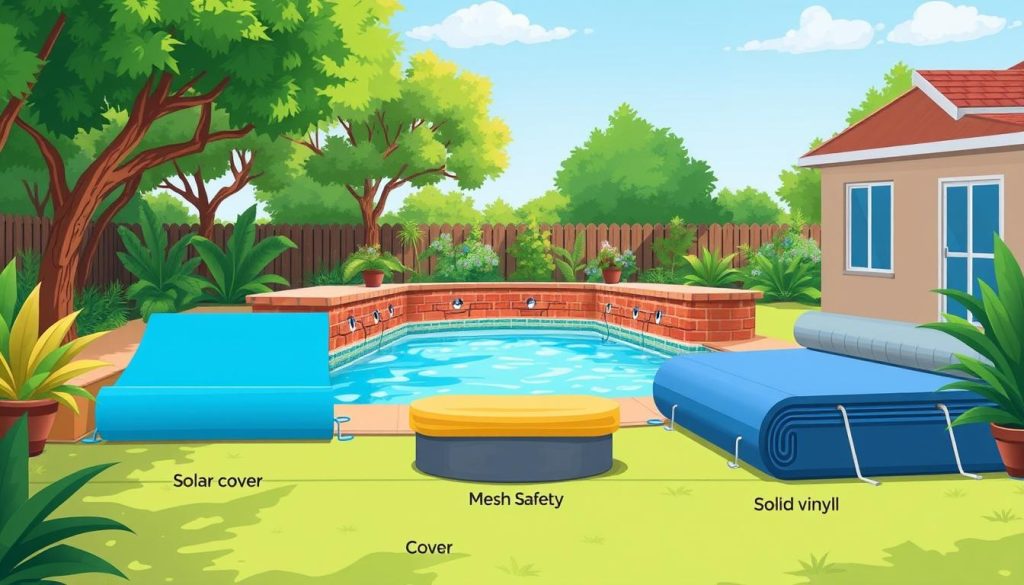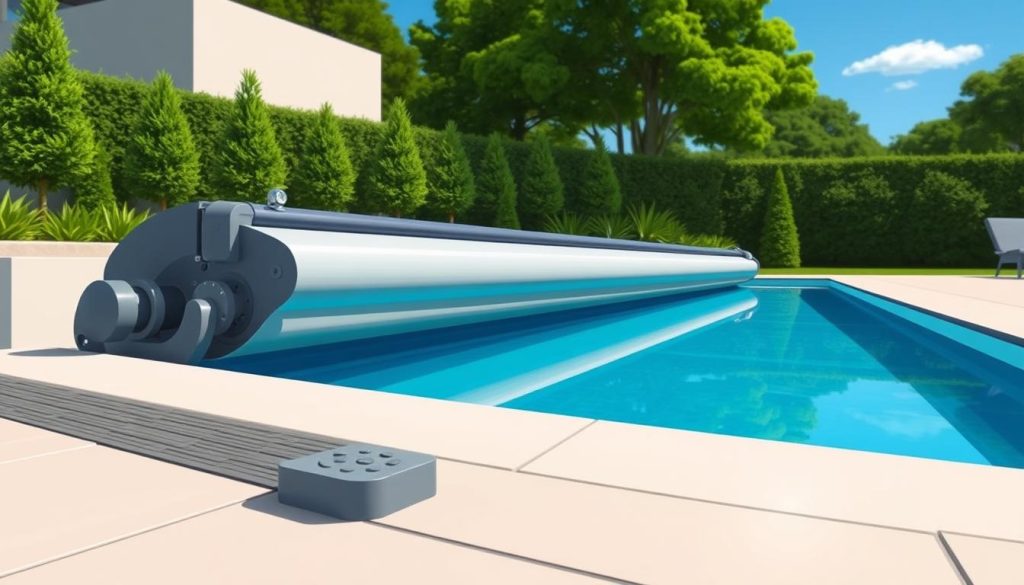
Leaving your swimming pool uncovered is rather like tossing money down the drain while inviting danger to your doorstep. I watched my water bills climb to shocking heights and fretted about the neighborhood children falling in before I discovered the wonder of a proper pool cover.
A quality cover stops nearly all water loss and creates a barrier that helps prevent drowning accidents. Pool covers aren’t mere accessories—they’re vital safety tools that save money, time, and quite possibly lives.
After a particularly hot summer last year, my cover paid for itself in water savings alone, not to mention the peace of mind it brings when I’m enjoying a cuppa in the garden.
Key Takeaways
- Pool covers act as vital safety tools that prevent drowning by blocking access to water, especially for homes with children.
- Different types of covers serve unique needs: safety covers support weight, thermal covers retain heat, and debris mesh catches leaves.
- Using a pool cover saves money by reducing water loss, cutting chemical use, and lowering energy costs for filtration.
- Covers keep pool water cleaner by blocking dirt and debris, which means less cleaning time and longer filter life.
- A quality cover extends your swimming season by trapping heat from the sun, warming the water during cooler months.
Importance of Pool Covers for Swim Safety

I can’t stress enough how vital pool covers are for swim safety. A proper cover acts as the first line of defense against accidents, especially for homes with small children.
Pool covers reduce the risk of drowning by creating a barrier over the water surface. This simple accessory can save lives by blocking access to the pool when adults aren’t watching.
Safety goes beyond just keeping kids out. Water that collects on top of some covers can pose dangers too. Not all covers provide equal protection; vinyl, thermal, and standard options serve different purposes.
The right cover keeps swimmers safe while also protecting the pool itself. My focus stays on child safety covers that can support weight and prevent access to the water below. Pool covers work alongside proper supervision, not as a replacement for watchful eyes.
Safety features like hooks and secure fastening systems make covers more effective barriers against unwanted pool entry.
Types of Pool Covers for Protection
Pool covers come in various shapes and sizes to match different pool types. My years in the pool industry have taught me that selecting the right cover makes all the difference for safety and maintenance.
| Cover Type | Description | Price Range | Best For |
|---|---|---|---|
| Safety Covers | Heavy-duty materials that support weight, preventing accidental falls into water | Premium pricing | Homes with children or pets |
| EnergyGuard GeoBubble | Advanced bubble design that retains heat and reduces evaporation | Mid-range | Energy conservation |
| Sol+Guard GeoBubble | Solar heating properties with enhanced durability | Mid to high range | Extending swim seasons |
| Thermal GeoBubble | Maximum heat retention with special thermal properties | Mid to high range | Colder climates |
| Solid PVC Covers | Complete blockage of sunlight, debris and water exchange | Varies by size | Off-season protection |
| Debris Mesh | Lightweight mesh design to catch leaves and large debris | Budget-friendly | Areas with heavy foliage |
| Intex Pool Cover 305cm | Designed specifically for Metal Frame Round pools | R 299.00 | Intex metal frame owners |
| Intex 457cm Round Cover | Larger coverage for bigger round pools | R 599.00 | Larger Intex pools |
| Intex 244cm Easy Set Cover | Perfect fit for smaller Easy Set pools | R 249.00 | Entry-level pool owners |
| Spa/Hot Tub Covers | Specialised insulated covers for hot water retention | Varies by size | Spa and hot tub protection |
Selecting the proper cover depends on your specific needs. Families with young children should prioritize safety covers above all else. Budget-conscious swimmers might start with a basic debris mesh for debris control. The right cover acts like a guardian angel for your pool, standing watch when nobody’s around.
Many pool owners combine different cover types for maximum protection. For example, using a thermal cover during swim season and switching to a solid safety cover during winter months provides year-round security.
Benefits of Using Pool Covers
I’ve found pool covers to be a game-changer for my swimming pool. They offer many perks that make pool ownership less of a hassle.
- Keeps water clean by blocking dirt and leaves from falling in, which means less time cleaning and more time swimming.
- Cuts down on chemical use since less dirt means fewer chemicals needed to keep the water safe and clear.
- Saves money on water bills because covers stop water from drying up in the sun, so I don’t need to top up as often.
- It helps warm up the pool water by capturing heat from the sun, which can extend my swimming season into cooler months.
- It makes my filtration system work less hard since there’s less gunk to filter out, adding years to its life.
- Boosts safety for kids and pets by creating a barrier over the water that can support some weight.
- Reduces energy costs as the filtration system runs for fewer hours each day thanks to cleaner water.
- Protects the pool from UV rays that can damage the pool’s coat and make it look old before its time.
- Lowers my carbon footprint through water conservation and less energy use for heating and cleaning.
- Offers peace of mind during storms or high winds when debris could otherwise fill the pool.
Conclusion
Pool covers offer a smart way to keep your swimming area safe and clean. My pool blanket has paid for itself many times over by cutting down on chemical use and cleaning time. A good cover will extend your swimming season and help maintain warmer water through those chilly months.
Getting a quote is easy—just contact a local builder who can match the right cover to your pool’s shape and size. Remember, the small cost of a quality cover today saves money tomorrow while keeping loved ones safe around the water.

